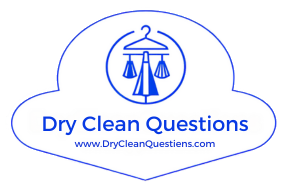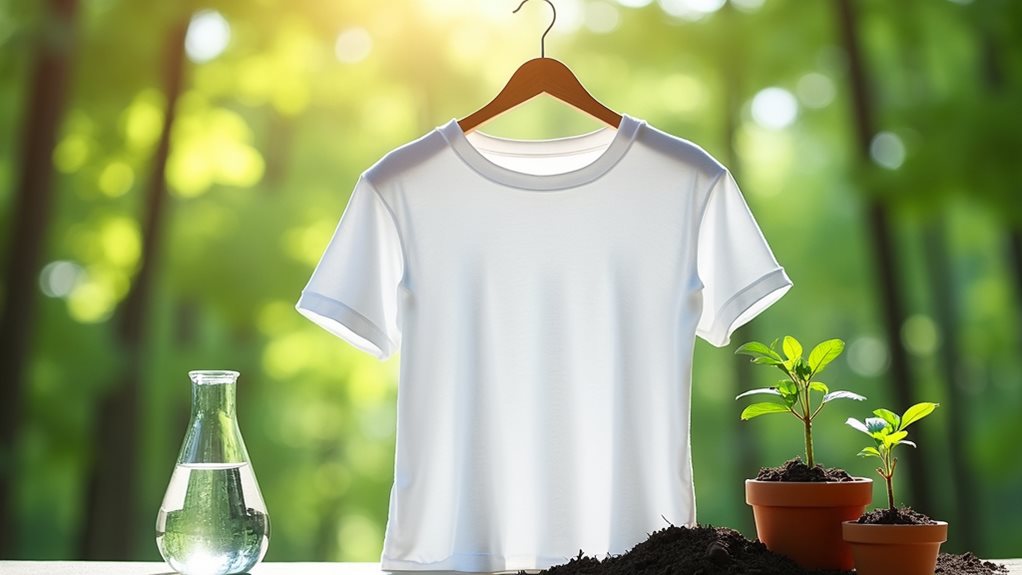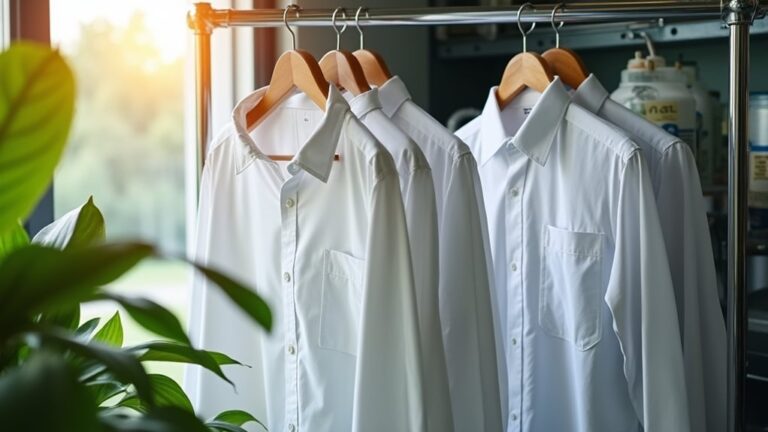Traditional dry cleaning isn’t great for the environment, honestly – that perchloroethylene chemical creates serious air pollution and dumps about 5.3 kilograms of carbon emissions per garment into our atmosphere. You’re also dealing with groundwater contamination and toxic waste that doesn’t break down naturally. However, you’ve got promising alternatives like professional wet cleaning and liquid carbon dioxide methods that’ll keep your clothes pristine without the environmental guilt. There’s definitely more to this eco-friendly cleaning story.
Environmental Impact of Traditional Dry Cleaning Methods
While most of us don’t think twice about dropping off our favorite blazer or delicate silk dress at the local dry cleaner, the traditional cleaning process creates a surprisingly heavy environmental footprint that extends far beyond the plastic garment bags we toss in the trash.
Traditional dry cleaning relies heavily on perchloroethylene (perc), a chemical solvent that releases volatile organic compounds into our air, contributing to environmental pollution and smog formation.
Perchloroethylene from conventional dry cleaning releases harmful volatile compounds that pollute our air and contribute to dangerous smog formation.
What’s particularly concerning is how this process generates a staggering 5.3 kilograms of carbon emissions per garment, creating a substantial carbon footprint compared to regular washing methods.
The contamination doesn’t stop there—groundwater contamination, non-biodegradable waste, and serious health risks make eco-friendly dry cleaning alternatives increasingly necessary for our planet’s future.
The chemical waste generated by these operations often ends up in landfills or water systems, further contributing to ecosystem damage and environmental degradation.
Health Risks Associated With Perchloroethylene and Chemical Solvents
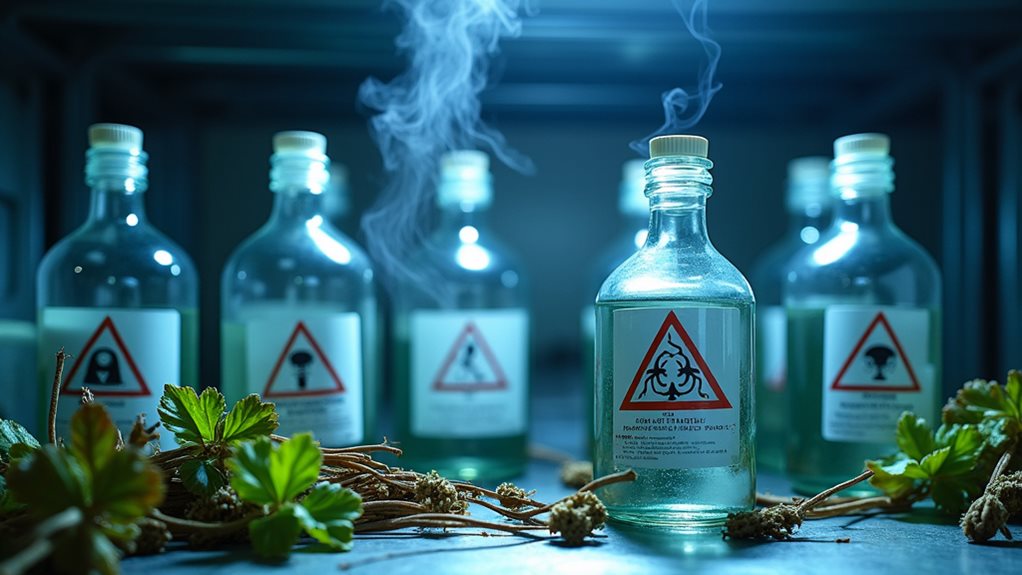
When I first learned that the chemical responsible for making my clothes look pristine was classified as a “probable” human carcinogen, I’ll admit I felt a bit betrayed by my trusted dry cleaner 😅.
Perchloroethylene, or “perc,” creates serious health risks that extend far beyond your freshly pressed shirt, causing dizziness, nausea, and respiratory irritation with short-term exposure.
The Environmental Protection Agency warns that dry cleaned clothes release toxic chemicals into your indoor air, creating contamination that’s particularly dangerous for nursing mothers and infants.
What really opened my eyes was learning about dry cleaning workers who face daily exposure during solvent disposal processes, while improper waste handling threatens public health through soil and water contamination that affects entire communities.
To minimize exposure, consumers should allow freshly dry cleaned garments to air out completely before wearing them, as PERC residues can remain on clothing and continue to off-gas harmful chemicals into your personal environment.
Green Dry Cleaning Alternatives and Eco-Friendly Solutions

After discovering the health risks lurking in traditional dry cleaning, I became determined to find safer alternatives that wouldn’t compromise my family’s wellbeing or contribute to environmental damage.
Green dry cleaning alternatives like professional wet cleaning became my go-to solution, using biodegradable detergents and water instead of harmful chemicals.
I’ve also discovered liquid carbon dioxide cleaning, which employs non-toxic solvents without releasing dangerous VOCs into our air.
What impressed me most about eco-friendly dry cleaners was their commitment to sustainable practices beyond just cleaning methods. They use energy-efficient machinery, recycle hangers, and offer reusable garment covers to minimize waste.
These modern alternatives effectively handle oils, grease, and stubborn stains that traditional water-based cleaning methods cannot remove, proving that hydrocarbon solvents and other eco-friendly options can deliver excellent results.
While these alternatives might cost slightly more, knowing I’m reducing environmental impact while protecting my family’s health makes every penny worth it.
Professional Wet Cleaning and Liquid Carbon Dioxide Technologies
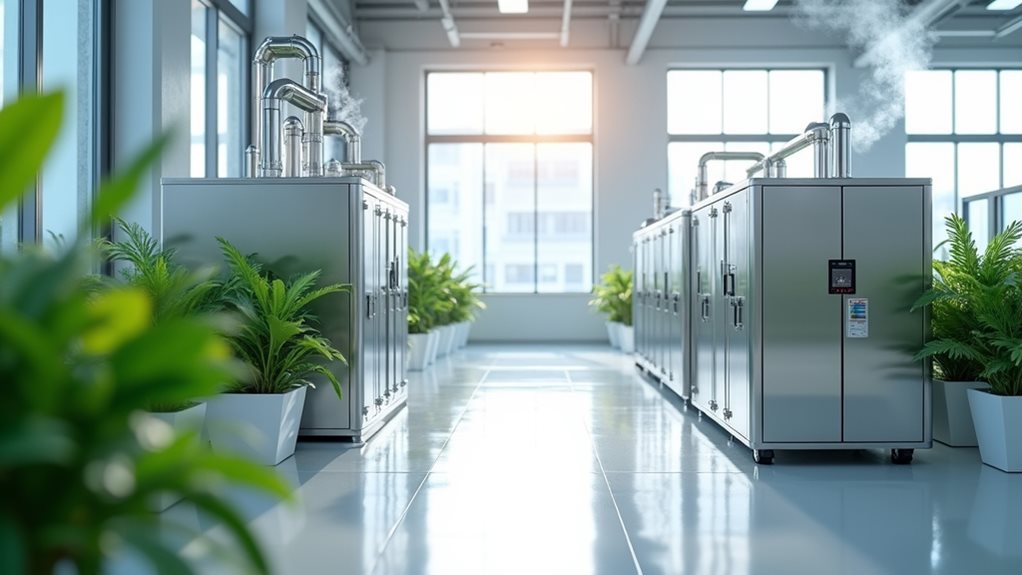
Because traditional dry cleaning left me feeling like I was trading clean clothes for a contaminated conscience, I dove headfirst into researching professional wet cleaning and liquid carbon dioxide technologies, two game-changing alternatives that actually deliver on their eco-friendly promises.
Professional wet cleaning uses water and biodegradable detergents in specialized machines, eliminating harmful solvents while excelling at cleaning delicate fabrics with minimal environmental impact.
Meanwhile, liquid carbon dioxide cleaning employs pressurized CO2 as a solvent, dissolving dirt without generating toxic waste or greenhouse gases.
What impressed me most was how both methods maintain exceptional garment quality while protecting our planet – you’re not sacrificing anything except guilt 😊.
These technologies prove you can have spotless clothes without compromising your environmental values.
For lighter maintenance between professional cleanings, steam cleaning offers another chemical-free option that uses high-temperature water vapor to refresh garments and remove odors effectively.
How to Choose Environmentally Responsible Dry Cleaning Services

Since discovering these cleaner alternatives exists, I’ve become that person who actually interrogates dry cleaners about their processes – and trust me, the responses reveal everything you need to know about their environmental commitment.
Start by asking directly about wet cleaning or liquid carbon dioxide cleaning methods, because these eco-friendly options avoid toxic solvents like perc entirely.
Don’t be shy about inquiring which cleaning solutions they use – you want biodegradable, non-toxic detergents, not petroleum-based chemicals.
Look for recycling programs and hanger return initiatives, which show they’re thinking beyond just cleaning.
Check customer reviews for mentions of energy-efficient practices and genuine environmental commitment, because greenwashing is unfortunately real in this industry.
Many cleaners are now offering silicone-based solvents as another green alternative that maintains excellent cleaning effectiveness while reducing environmental impact.
